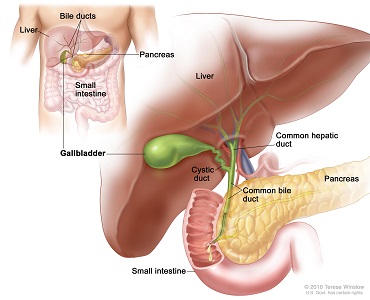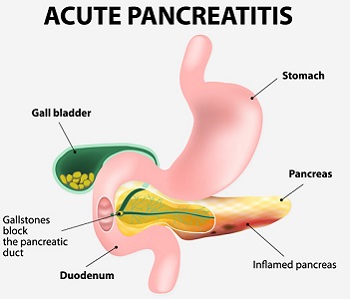
What is Pancreatitis?
Pancreatitis is actually an inflammation of the pancreas. This inflammation could be an acute one which could eventually disappear in some days. However, if the inflammation is chronic then it can span through years.
Pancreatitis causes attacks of abdominal pain, nausea and vomiting worsened by eating and drinking alcohol. Acute Pancreatitis can be life-threatening.
What is Pancreas?
The pancreas is a gland behind the stomach and closes to the duodenum. The pancreas secretes digestive juices (enzymes) into the duodenum through a tube called the pancreatic duct. Pancreatic enzymes along with bile help in digestion of food. The pancreas also releases the hormones insulin and glucagon. These hormones help the body regulate the glucose it takes from food for energy.
Symptoms of Pancreatitis
1. Here are some of the symptoms that you need to look for:
2. Chronic pancreatitis signs and symptoms include:
- Upper abdominal pain
- Abdominal pain that radiates to your back
- Abdominal pain that feels worse after eating
- Nausea
- Vomiting
- Swelling & Tenderness in the abdomen
2. Chronic pancreatitis signs and symptoms include:
- Indigestion
- Losing weight without trying Oily, smelly stools (steatorrhea)
- Severe Acute Pancreatitis May cause Dehydration and Low blood pressure.
Causes of Pancreatitis
Pancreatitis happens when the digestive enzymes produced by our pancreas get activated while being inside the pancreas thereby causing damage to the organ. Normally, pancreatic digestive enzymes do not become active until they reach the small intestine.
A number of causes have been identified for acute pancreatitis and chronic pancreatitis, including:
- Alcoholism
- Gallstones
- Abdominal surgery
- High levels of parathyroid hormone in the blood
- Cigarette smoking
- Cystic fibrosis
- Family history of pancreatitis
- Injury to the abdomen
- Pancreatic cancer
- Infection
- High calcium levels in the blood
- High triglyceride levels in the blood
- Certain medications
- Endoscopic retrograde cholangio pancreatography (ERCP), when used to treat gallstones
How is Acute Pancreatitis Diagnosed?
- Through medical history and physical examination
-
Blood test
Pancrease enzyme levels During acute pancreatitis amylase and lipase are increased almost 3 times.
Glucose, calcium, magnesium, sodium, potassium and bicarbonate.
Glucose, calcium, magnesium, sodium, potassium and bicarbonate.
-
Abdomen Ultra Sonography
-
CT Scan may show gallstones and extent of damage to pancreas
-
Endoscopic Ultrasound (EUS) to see visual images of the pancreas and bile duct.
-
Magnetic resonance cholangiopancreatography (MRCP).
MRCP uses magnetic imaging that produces cross-section images of parts of the body, help to show pancreas, gallbladder, pancreas and bile ducts.
Pancreatitis in Children?
Chronic pancreatitis in children is rare. More often a cause of pancreatitis in children is unknown, often preceded by the viral infection such as URI. Trauma to the pancreas and hereditary pancreatitis are two known causes of childhood pancreatitis. Children with cystic fibrosis may be at risk of developing pancreatitis
Our Specialist

Dr. Nitish Jhawar
M.S., FMAS, FIAGES, FALS, FACRSI
Fellow Advance Laparoscopic Surgery
Fellow Colorectal Surgery USA
Senior Laparoscopic & Colorectal Surgeon
Phone No: +91 9322 229 159
Email Id: info@neoalta.com

